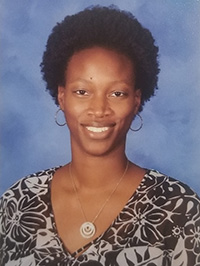

An effective classroom behavior management plan begins with a statement of purpose—a brief, positive statement that conveys the reasons various aspects of the management plan are necessary. You might think of this like a mission statement that guides the goals, decisions, and activities of the classroom. Because it lays the foundation for the rest of the plan, the statement of purpose should be the very first thing the teacher writes. The four criteria below are key to communicating the statement of purpose to education professionals, parents, and students.
Andrew Kwok discusses how a teacher can create a statement of purpose that is culturally respectful and responsive. Next, KaMalcris Cottrell describes her classroom’s statement of purpose.

Andrew Kwok, PhD
Assistant Professor, Department of
Teaching, Learning, and Culture
Texas A&M University

KaMalcris Cottrell
School Behavior Support
Transcript: Andrew Kwok, PhD
In terms of a statement of purpose, all teachers should think about what they want to accomplish in the classroom, but they also need to consider what the students and the parents and others, the actual constituents of the classroom, want to accomplish as well. And there should just be a merging of those goals and objectives, as opposed to having the teacher create something and assuming that one box fits all students. Being able to allow space for it to incorporate the individuals that it’s working with will allow it to be more respectful and responsive, as opposed to creating a definitive statement that does not allow for the flexibility of those who it is currently teaching.
Transcript: KaMalcris Cottrell
My classroom statement of purpose aligns with our school-wide statement of purpose. It gives us our expectations for the day from the student side and from the teacher side. And this mission statement covers our four Be’s: respectful, responsible, ready, and safe. There are the things that we’re saying we’re going to be every single day. And with this in place, I also incorporate myself into this. I tell the students, I will be respectful, I will be safe, I will be responsible, and I’ll be ready. So when you come to my group, I’m going to be ready for you, and we’re going to be responsible, and we’re going to work on the skills that we need to work on. And I think this is important because this is throughout our entire school. So even when we come together as an entire school body, everyone knows what the four Be’s are. So if we say, “I will be ready,” students start to check themselves. Oh, am I ready? Am I sitting safely? Is my voice off? Am I paying attention? Are my eyes on the speaker? So just the four cue words. But I think it also covers individual work in the classroom. It covers group work in the classroom. It also covers outside of the classroom.
Ms. Amry developed the statement of purpose below. Review it and determine whether or to what extent it is focused, direct, positive, and clearly stated.

Our classroom is a safe, positive place where everyone works together, is creative, and is respectful. All students will participate in learning and do their very best.
A statement of purpose (or mission statement) is an important tool for shaping practice and communicating core school or classroom values. When stated in a clear, succinct, and positive way, this statement serves as a foundation for developing a classroom behavior management plan and cohesively ties the components of the plan together.
(Algozzine, Audette, Marr, & Algozzine, 2005; Stemler, Bebell, & Sonnabend, 2011)
![]()
Now it’s your turn to create a statement of purpose. You can develop it for your classroom (current teachers) or for the grade level you hope to teach someday (future teachers).
Note: If your school has a school-wide statement of purpose or mission statement, be sure your classroom statement aligns with it.
The IRIS Center Peabody College Vanderbilt University Nashville, TN 37203 [email protected]. The IRIS Center is funded through a cooperative agreement with the U.S. Department of Education, Office of Special Education Programs (OSEP) Grant #H325E220001. The contents of this website do not necessarily represent the policy of the U.S. Department of Education, and you should not assume endorsement by the Federal Government. Project Officer, Sarah Allen.
Copyright 2024 Vanderbilt University. All rights reserved.
* For refund and privacy policy information visit our Help & Support page.
This work is licensed under a Creative Commons Attribution-NonCommercial-NoDerivatives 4.0 International License.
We use cookies to ensure that we give you the best experience on our website. If you continue to use this site we will assume that you are happy with it. Ok